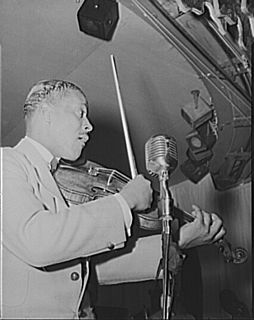This page is based on this
Wikipedia article Text is available under the
CC BY-SA 4.0 license; additional terms may apply.
Images, videos and audio are available under their respective licenses.

Ella at Duke's Place is a 1965 studio album by Ella Fitzgerald, accompanied by the Duke Ellington Orchestra. While it was the second studio album made by Fitzgerald and Ellington, following the 1957 Song book recording, a live double album Ella and Duke at the Cote D'Azur was recorded in 1967.
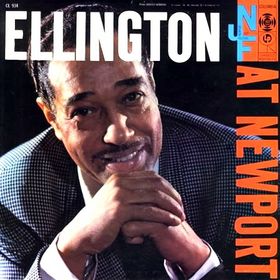
Ellington at Newport is a 1956 live jazz album by Duke Ellington and his band of their 1956 concert at the Newport Jazz Festival, a concert which revitalized Ellington's flagging career. Jazz promoter George Wein describes the 1956 concert as "the greatest performance of [Ellington's] career... It stood for everything that jazz had been and could be.". It is included in the book 1001 Albums You Must Hear Before You Die, which ranks it "one of the most famous... in jazz history". The original release partly recreated in the studio after the Ellington Orchestra's festival appearance.

Ellington Indigos is a 1958 jazz album by Duke Ellington.
"Diminuendo and Crescendo in Blue" is a jazz composition written in 1937 by Duke Ellington and recorded for the first time on May 15, 1937 by the Duke Ellington Orchestra with Wallace Jones, Cootie Williams (trumpet), Rex Stewart (cornet), Barney Bigard (clarinet), Johnny Hodges, Otto Hardwick, Laurence Brown, Joe Nanton (trombone), Harry Carney, Sonny Greer (drums), Wellmann Braud, Freddie Guy (guitar), and Duke Ellington (piano). No tenor saxophone was present in this recording section, nor in "Crescendo in Blue," which was recorded the same day. In its early form, the two individual pieces, "Diminuendo in Blue" and "Crescendo in Blue," were recorded on opposite sides of a 78 rpm record. The 1956 performance at the Newport Jazz Festival revitalized Ellington's career, making newspaper headlines when seated audience members chaotically began rising to dance and stand on their chairs during Paul Gonsalves's tenor saxophone solo.

Cookin' is an album recorded in 1957 by Paul Gonsalves. The album was rereleased on CD in 2008 with bonus tracks from Clark Terry's Out on a Limb with Clark Terry and The Jazz School.

Ellingtonia Moods and Blues is an album recorded in 1960 led by Paul Gonsalves.
Diminuendo, Crescendo and Blues is an album recorded in 1958 by the C Jam All-Stars led by Paul Gonsalves.

Tenor Stuff is an album recorded in 1961 by Paul Gonsalves and Harold Ashby.

Tell It the Way It Is! is an album recorded in 1963 by saxophonist Paul Gonsalves. He is joined by Johnny Hodges and Ray Nance, both members of the Duke Ellington Orchestra, pianist Walter Bishop Jr., and trumpeter Rolf Ericson.

Humming Bird is an album recorded in 1970 by Paul Gonsalves.
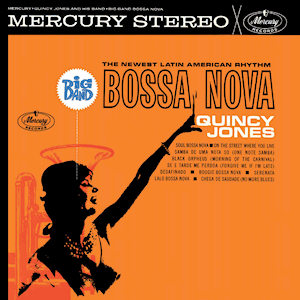
Big Band Bossa Nova is an album by Quincy Jones.
Willie Cook was an American jazz trumpeter.
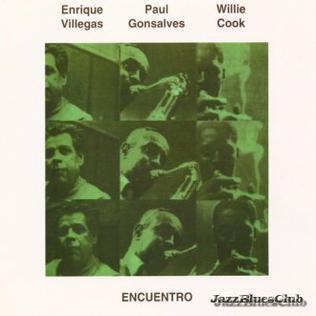
Encuentro is an album recorded in Buenos Aires, Argentina in 1968 by Paul Gonsalves.
It was recorded at the Teatro Gran Rex in Buenos Aires the september 15 of 1968.

Sittin' In is a 1957 studio album by Dizzy Gillespie, featuring the saxophonists Stan Getz, Paul Gonsalves and Coleman Hawkins.

Happy Reunion is an album by American pianist, composer and bandleader Duke Ellington recorded in 1956 and 1958 but not released on the Sony label until 1985. The album features two small group sessions led by Ellington and recorded in Chicago.
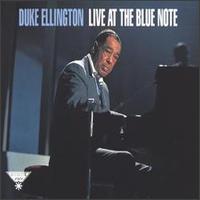
Live at the Blue Note is a live album by American pianist, composer and bandleader Duke Ellington recorded at The Blue Note nightclub in Chicago for the Roulette label in 1959.

Featuring Paul Gonsalves is an album by American jazz pianist, composer, and bandleader Duke Ellington. Without new material to work with, Ellington recorded the album with his orchestra and saxophonist Paul Gonsalves in 1962 during a four-hour recording session. It was not released until 1985 by Fantasy Records.

Studio Sessions, 1957, 1965, 1966, 1967, San Francisco, Chicago, New York is the eighth volume of The Private Collection - whereas is Volume 5 in the edition of the collection by the English KAZ Jazz Masters label - a series documenting recordings made by American pianist, composer and bandleader Duke Ellington for his personal collection which was first released on the LMR label in 1987 and later on the Saja label.

Duke with a Difference is an album by American jazz trumpeter Clark Terry featuring tracks recorded in 1957 for the Riverside label.



